The Early Years
In the early 1850s, settlers from the eastern United States first put down roots along the Kickapoo River in Crawford County, Wisconsin. Inspired by the large groves of white pine that were so prevalent in the area at that time, they called the village they established Pine Grove.
In 1867, the name of the village was changed to Soldiers Grove to honor the soldiers who had camped here during the course of the Black Hawk War, which swept through the area in 1832. In May of that year, Sac and Fox Indians under the leadership of Black Hawk left the Iowa territory and returned to their homes across the Mississippi River in northern Illinois. These Native Americans had lost their Illinois lands in a disputed treaty signed in St. Louis in 1804. Their return to northern Illinois sparked widespread panic among white settlers, and Illinois Governor Reynolds quickly called up the militia, which included a young Abraham Lincoln. Both the militia and regular army troops proved unable to locate the elusive Indians at first, but by July they had begun to pursue Black Hawk’s band across northern Illinois and southwestern Wisconsin, engaging them in a major conflict at Wisconsin Heights before finally routing the Indians at Bad Axe on the Mississippi River.
Much of the land around the future site of Soldiers Grove was deeded to the veterans of U.S. wars, as the custom was to allot property for service in lieu of money. The first settler was Joseph H. Brightman, who in 1856 received 80 acres of government land in compensation for his service in the War of 1812. His property encompassed what would later become the downtown area of Soldiers Grove. He erected the first frame house and barn, and built the first commercial building—a water-driven saw mill. The first village school was taught in the Brightman family barn by Miss Frank Carter. After teaching for only two weeks, Miss Carter resigned on account of illness, and 13-year-old Mary Brightman was compelled to teach for the remainder of the term.
Ten years later, in 1866, Samuel Hutchins built the first general store and opened the first hotel. In that year the village was laid out, and ten years later it was legally platted. At first the village consisted of only four blocks; a little later three more were added. By 1867, the population had grown enough to merit the first frame schoolhouse. Over the following years, the town saw the addition of a large brick bank building in 1869; a flour mill in 1870; and a hotel, department store, drug store and opera house—which itself contained a saloon, dance hall, and furniture store), all around 1877. A hardware store opened in 1879.iii By 1884, the population had grown to some 300 people. The railroad came to town in the spring of 1892, and its arrival generated a depot, stock yards, and a tobacco warehouse.
Although early settlers grew wheat, during the late 1800s, the switch to dairy farming was well underway. Tobacco also became an important crop and high-quality cigar leaf and chewing tobacco were produced on the small family farms around Soldiers Grove.
Ben Logan, in his wonderful book, “The Land Remembers,” delivers the best description of the local farm of the 1920s and 30s:
“There were two hundred sixty acres of cultivated fields, woods, and pasture land sprawled out along the narrow branching ridgetop. There was the cluster of buildings, dominated by the main barn with its stanchions for dairy cows, stalls for work horses. Attached to the barn was a tall silo, which oozed the strong smell of fermented silage when it was filled and made a marvelous, echoing place to yell when it was empty. A second barn, mostly for hay and young cattle, had a machine-shed lean-to. An eight-foot-tall wood windbreak connected the two barns. Across the barnyard, like the other side of a compound in a fort, was the great tobacco shed. It stood on poles rather than foundations and it creaked and groaned in the wind.
There were the bulging granary, with bins for oats; a slatted corncrib with white and yellow ears showing; a hog house with roof ventilators turning restlessly in the wind; a milkhouse next to the tall steel-towered windmill; and a woodshed with sticks of oak for the kitchen range and heating stoves.
There was the house. It had two wings, the walls of the old one very thick because the siding hid what had once been – a log house. In the yard around the house were lilacs, elms, box elders, junipers, white pines, and one immense soft maple tree that looked as if it had been there forever. On the east side of the yard was the orchard with its overgrown apple, cherry, and plum trees. On the west was the rich black soil of the garden.
And Soldiers Grove thrived because of the farms. In his article “Reflections from the Upstairs Window,” resident Duane Moore recalls his childhood in Soldiers Grove. In 1939, Mr. Moore—then in second grade—lived above the grocery store on Main Street.
“Soldiers Grove was a relatively prosperous community of 750 residents, with four grocery stores, three restaurants, two barbershops, four filling stations, two auto dealers, a 5&10 cent store, butter creamery, cheese factory, drug store, theatre, hardware store, grain mill, post office, weekly newspaper, pool hall, and seven taverns. All were located on Main Street and our store was right in about the middle, just across the street from the pool hall. The village was nestled in the scenic hills of the Kickapoo River Valley and relied mostly on area farms for its business.
When prohibition ended in the 1930s, many communities in Wisconsin elected to remain ‘dry.’ That meant no beer or liquor was sold within their boundaries. Viroqua, 12 miles to the north, and Richland Center, 20 miles to the east, were two such communities. Therein was the reason why Soldiers Grove prospered with seven taverns. Every Saturday night, and a few nights in between, the roads to and from Soldiers Grove were traveled by folks from the “dry” towns. It seemed like everybody came to town on Saturday night when the stores were open late and there was a dance in the town hall. The local theater would have a double feature. Usually Tex Ritter, Roy Rogers, Gene Autry, or Hopalong Cassidy were featured. The population of Soldiers Grove would top 2,000 on Saturday night. Those were the nights when the Upstairs Window over the store on Main Street offered sights one could write a novel about.
Soldiers Grove grew right along with the dairy industry during the first half of the century, until World War II and the subsequent decline of family farming. Its population peaked at 778 in 1940. But in 1939 the railroad through town was discontinued, an event that often brought demise to small rural towns. Also, in the 1950s, U.S. Highway 61 was moved to bypass the Soldiers Grove business district. The highway, which used to coincide with Main Street, was relocated a half-mile to the east, and downtown business was never the same.

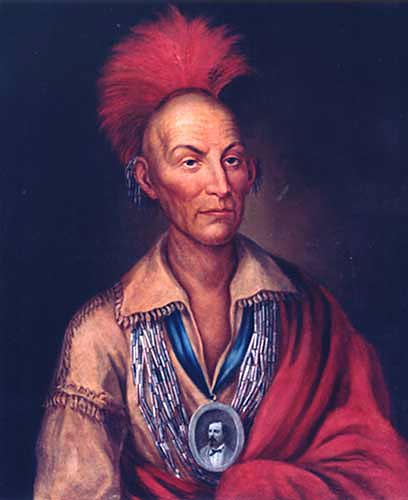 Blackhawk
Blackhawk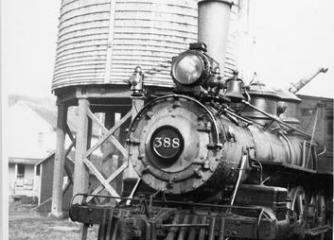 Stump Dodger Train
Stump Dodger Train 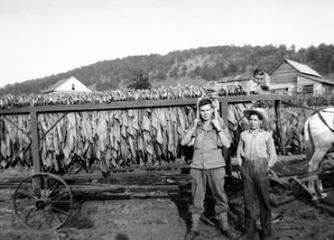 Tobacco Harvest
Tobacco Harvest 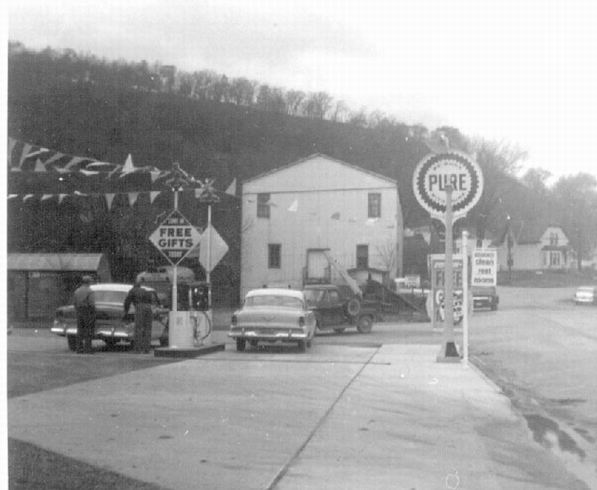 Gas Station
Gas Station 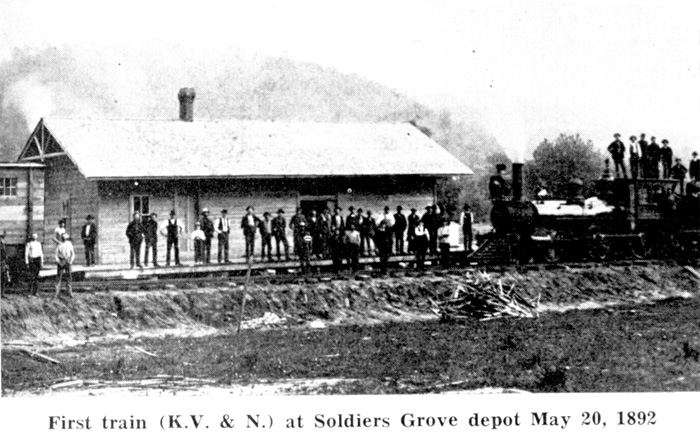 Train Station
Train Station 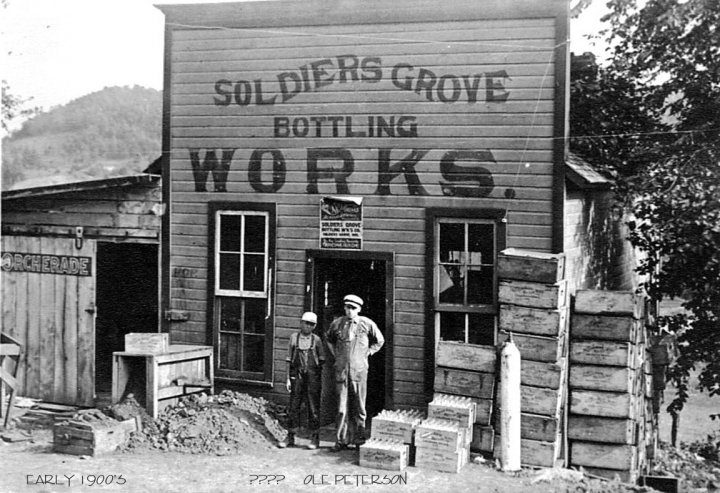 Bottle Works
Bottle Works 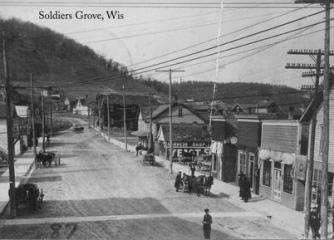 Old Main Street
Old Main Street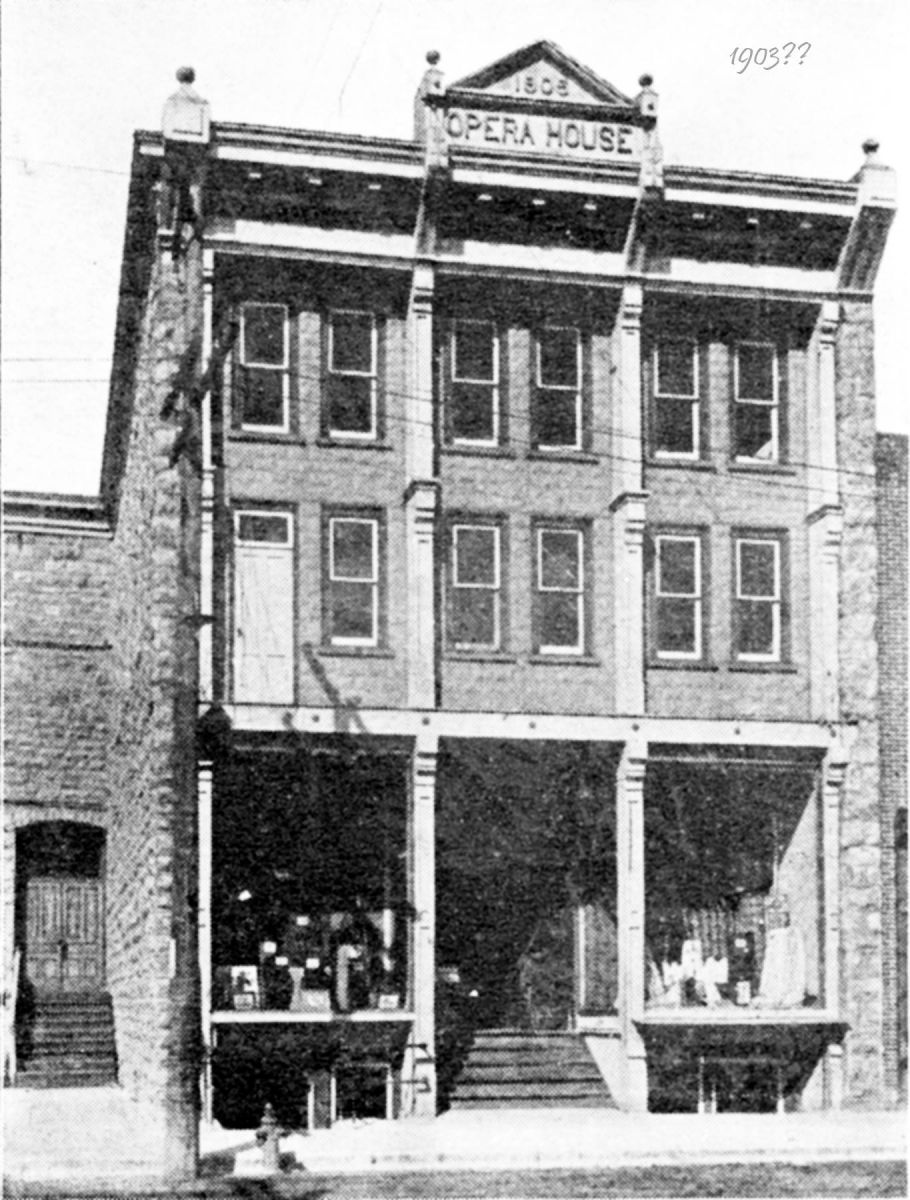 Opera House
Opera House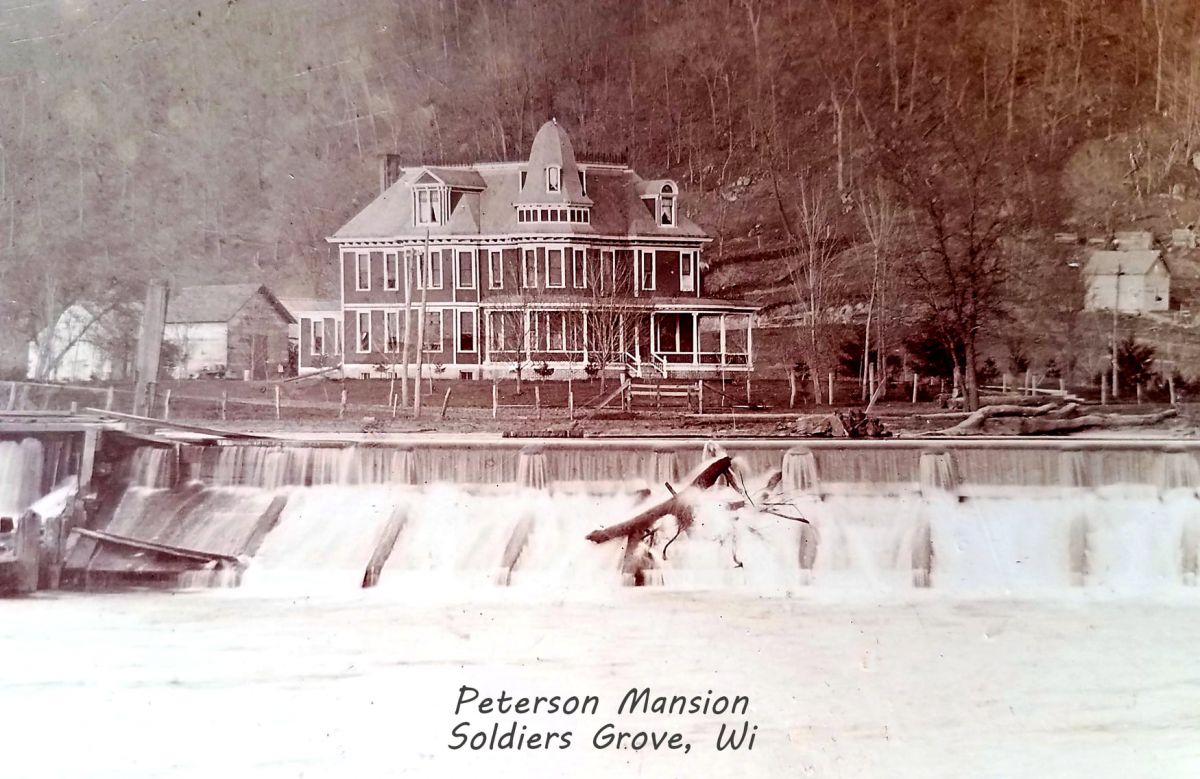 Peterson Mansion
Peterson Mansion 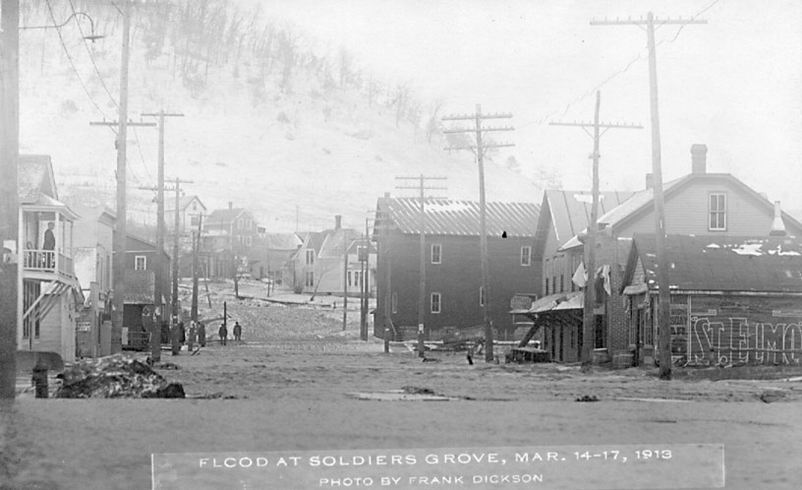 1913
1913